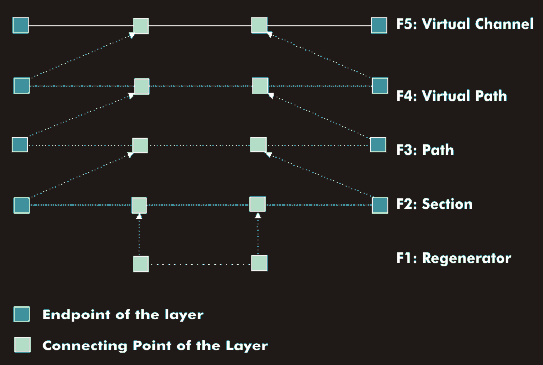OAM cell
Operation, Administration, and Maintenance(OAM) is an operational service for monitoring and managing networks, such as ATM and B-ISDN. In ATM, five information flow hierarchies are defined for administration and monitoring management. Each of these hierarchies, labeled F1 through F5, represents a bidirectional link.
Hierarchies F1, F2 and F3 refer to the physical layer of the ATM layer model, F4 and F5 to the ATM layer. Depending on the transmission medium used and the type of cell transmission( SDH, PDH, etc.), the transmission of this monitoring information is implemented differently.
F1 and F2, when the physical layer uses Synchronous Digital Hierarchy (SDH) as the transmission protocol, are transmitted by the Section Overhead and are used to connect regenerators (F1) and sections (F2), respectively. F3 is used for path connection.
For an ATM transmission, the most important information flows are F4 and F5. The F4 information flow is located in the virtual path plane, while the F5 information flow is located in the virtual channel plane. When OAM protocols are applied to an F4 or F5 information flow, special OAM cells are inserted into the subscriber traffic.
ITU-T Recommendation I.610 describes the relationship between physical layer OAM capabilities and ATM layer OAM tasks.


